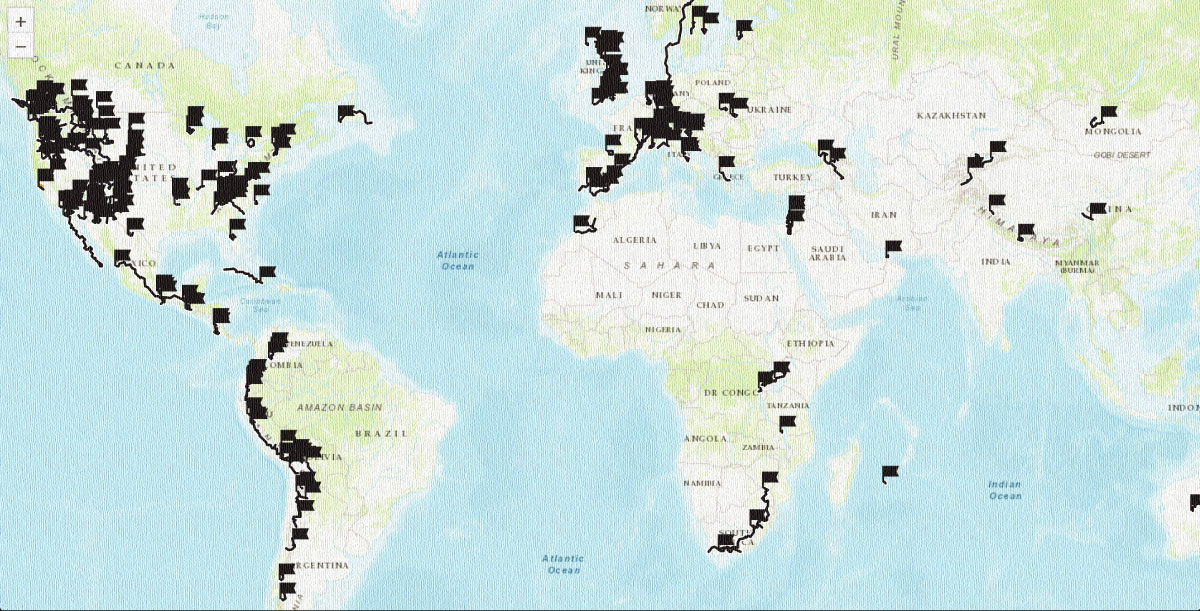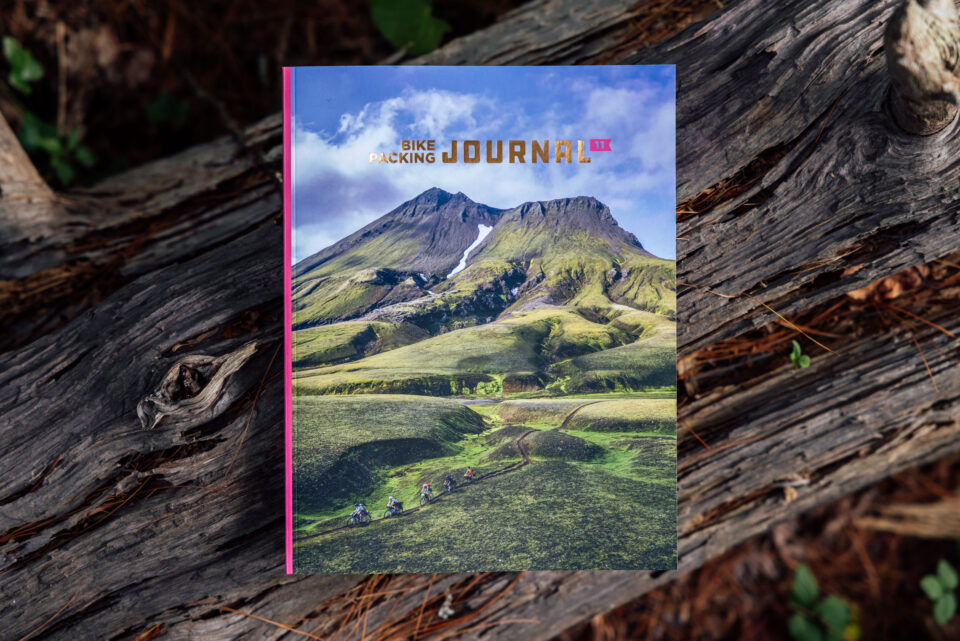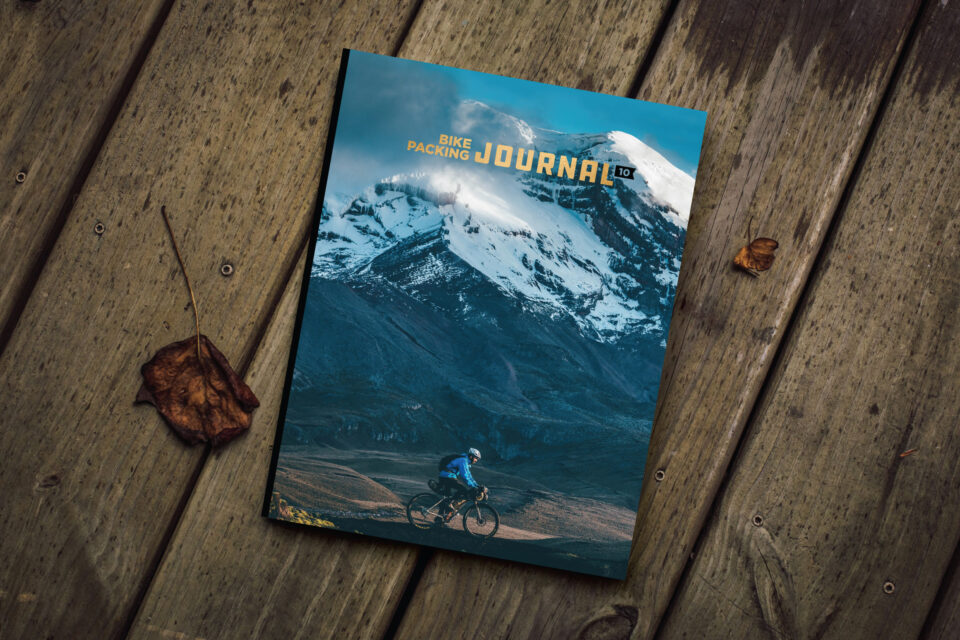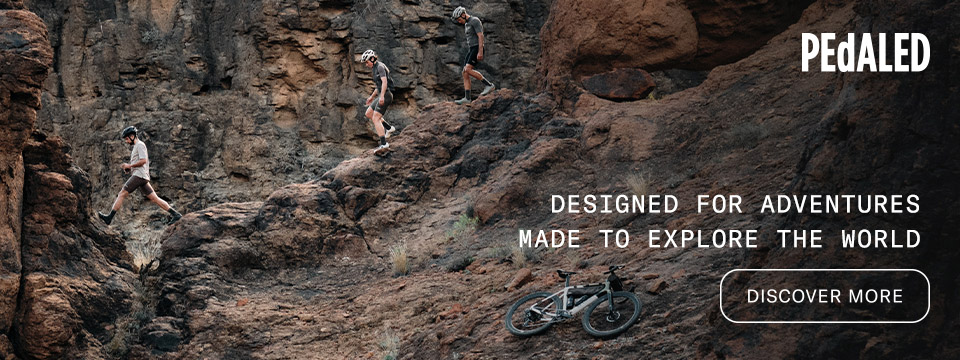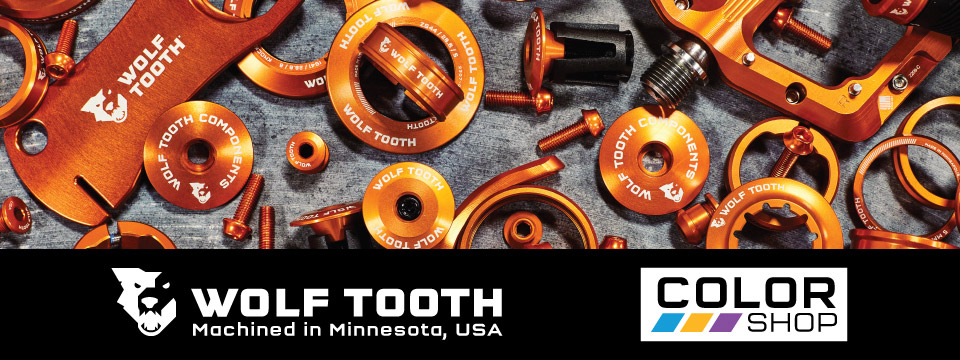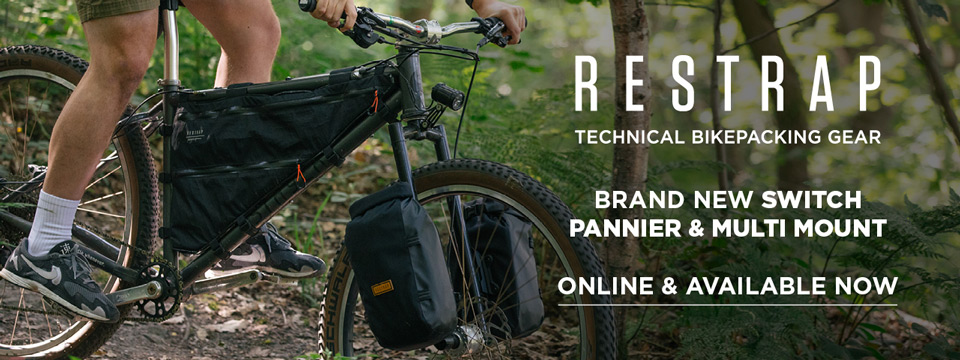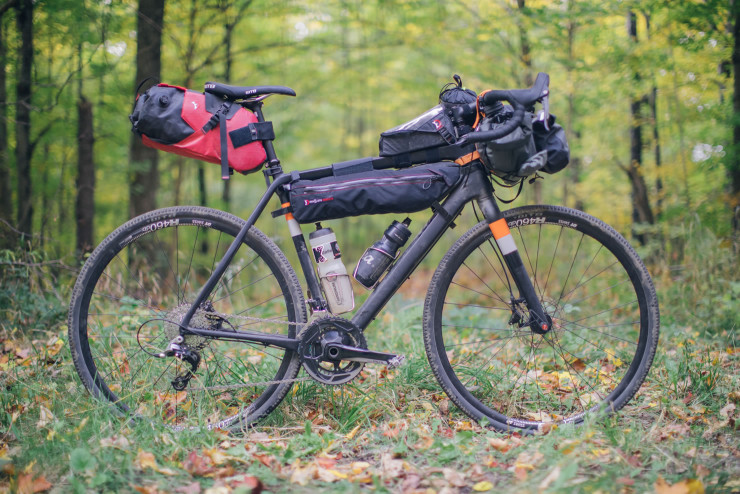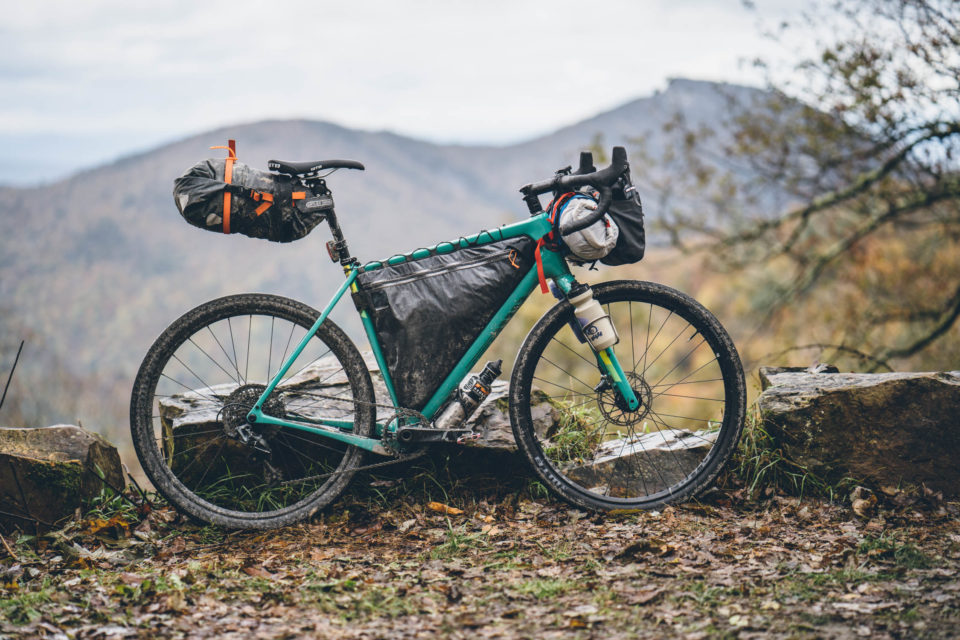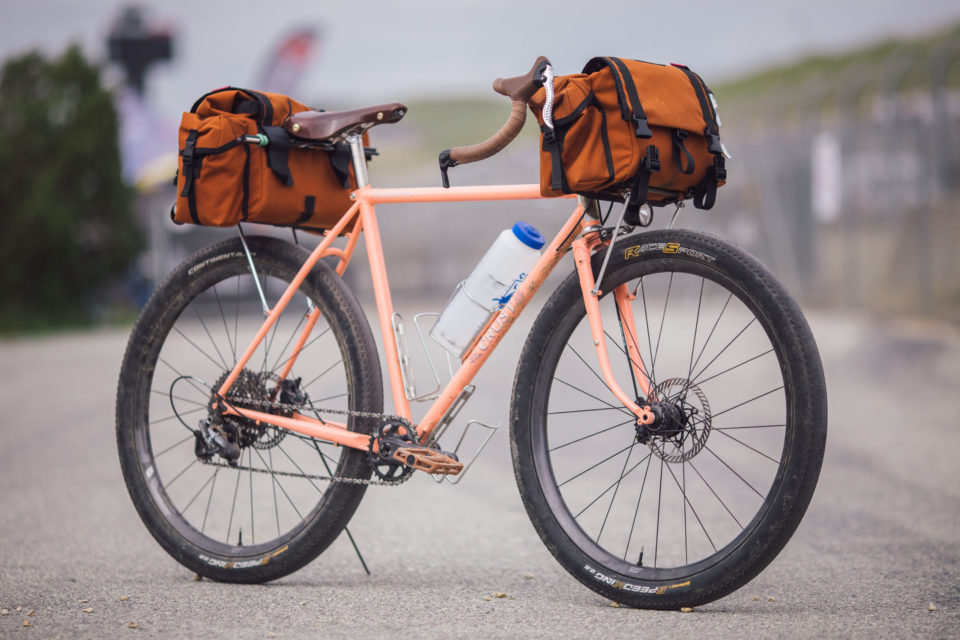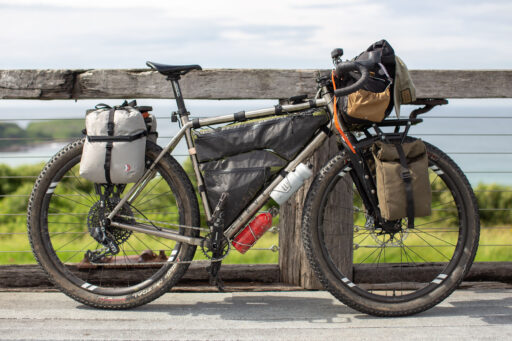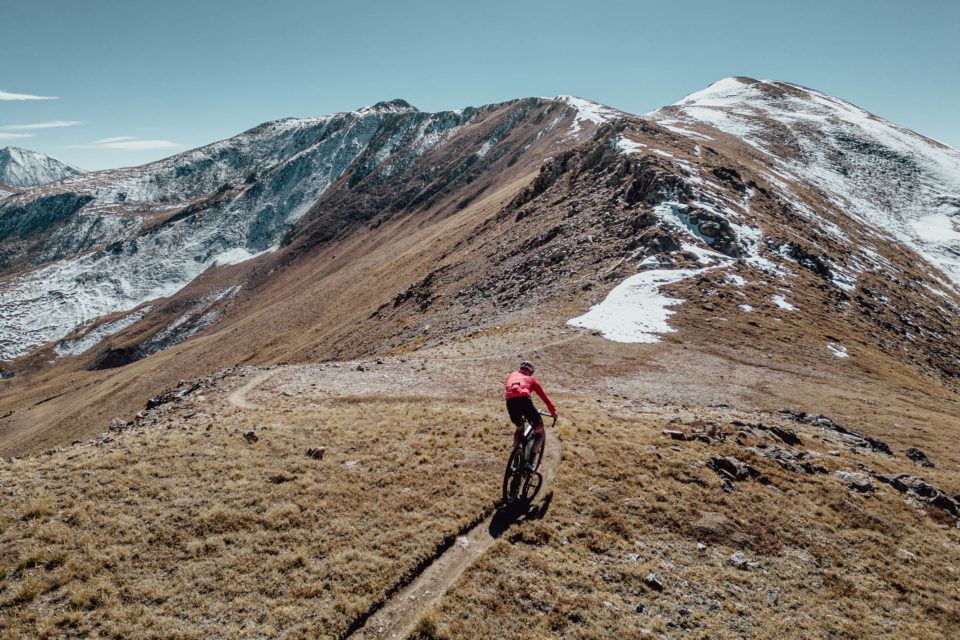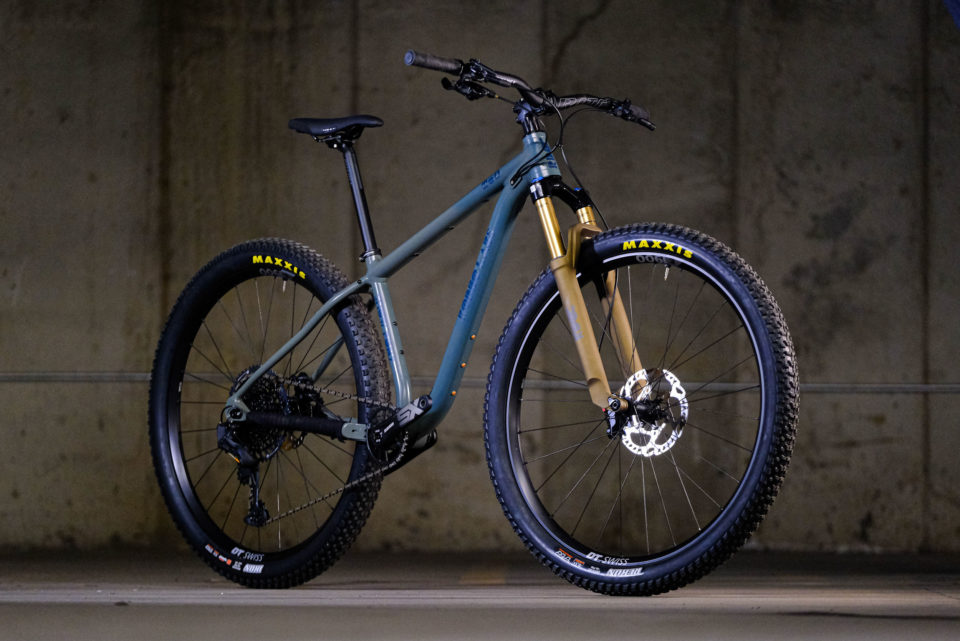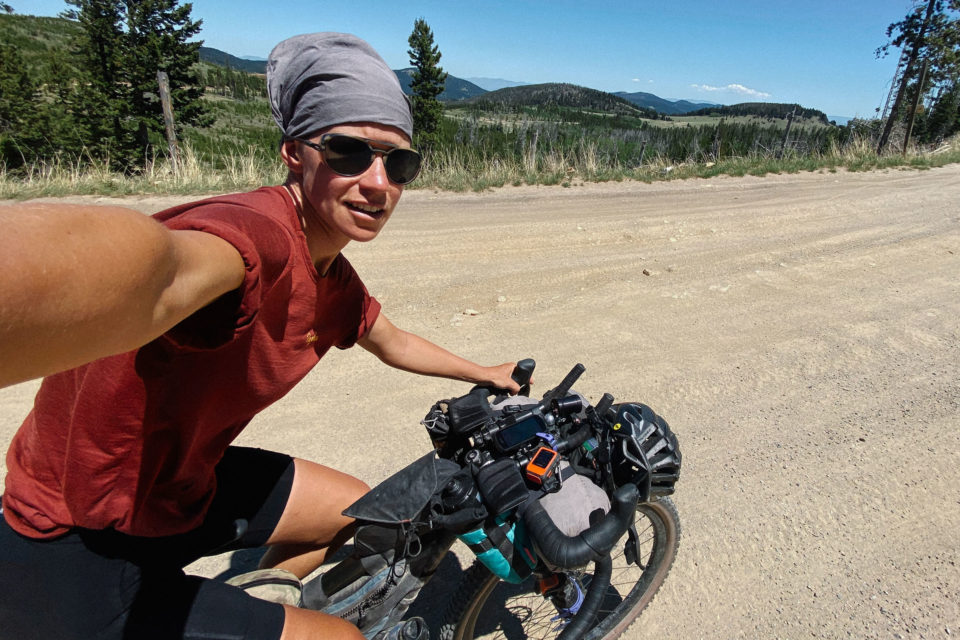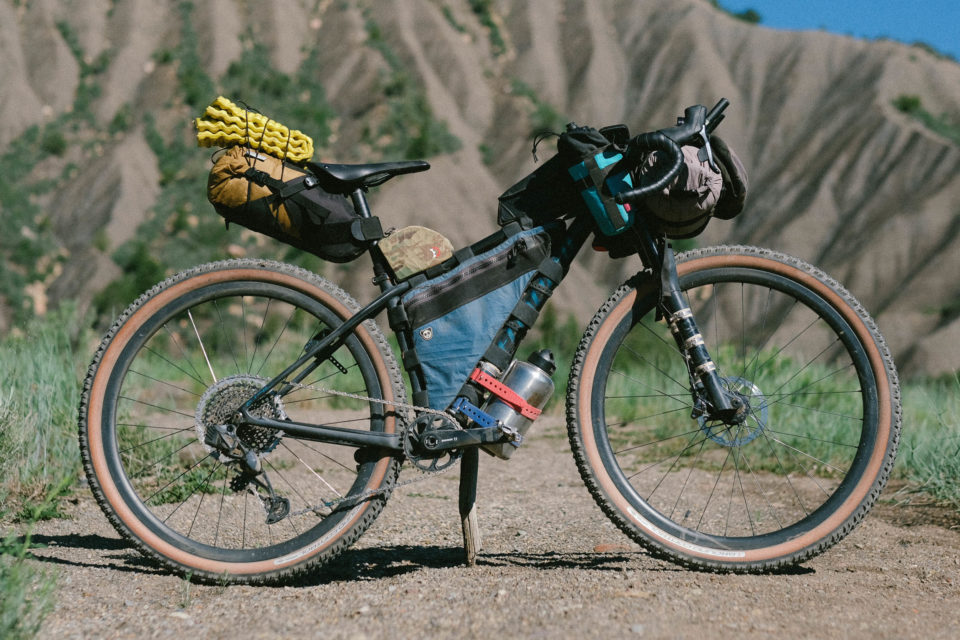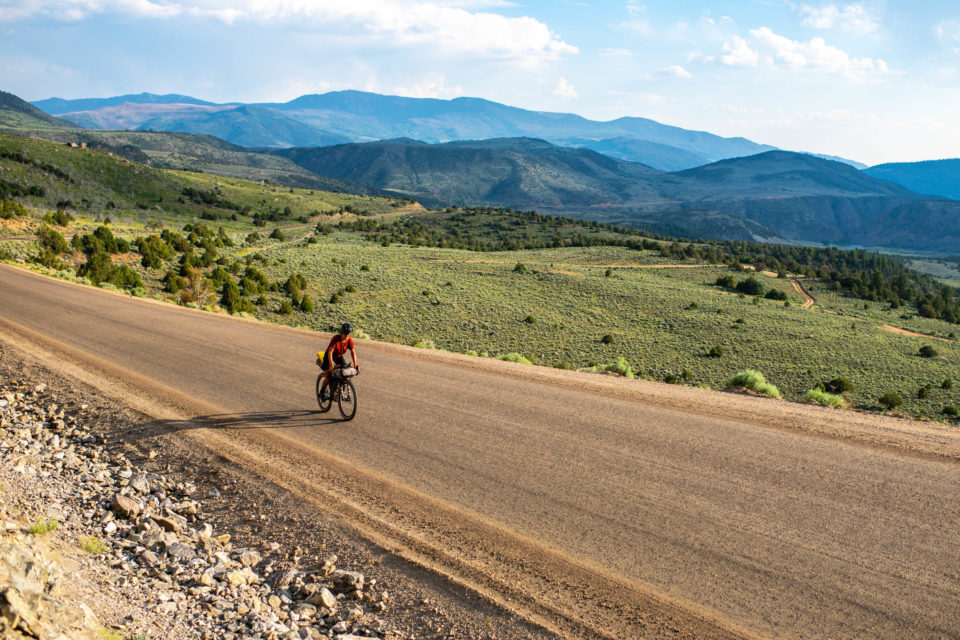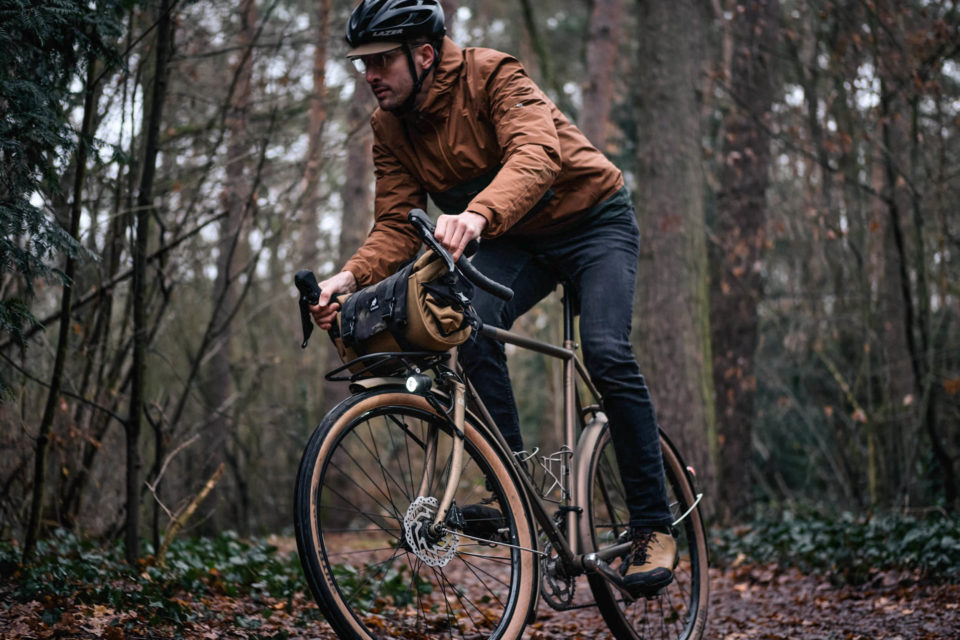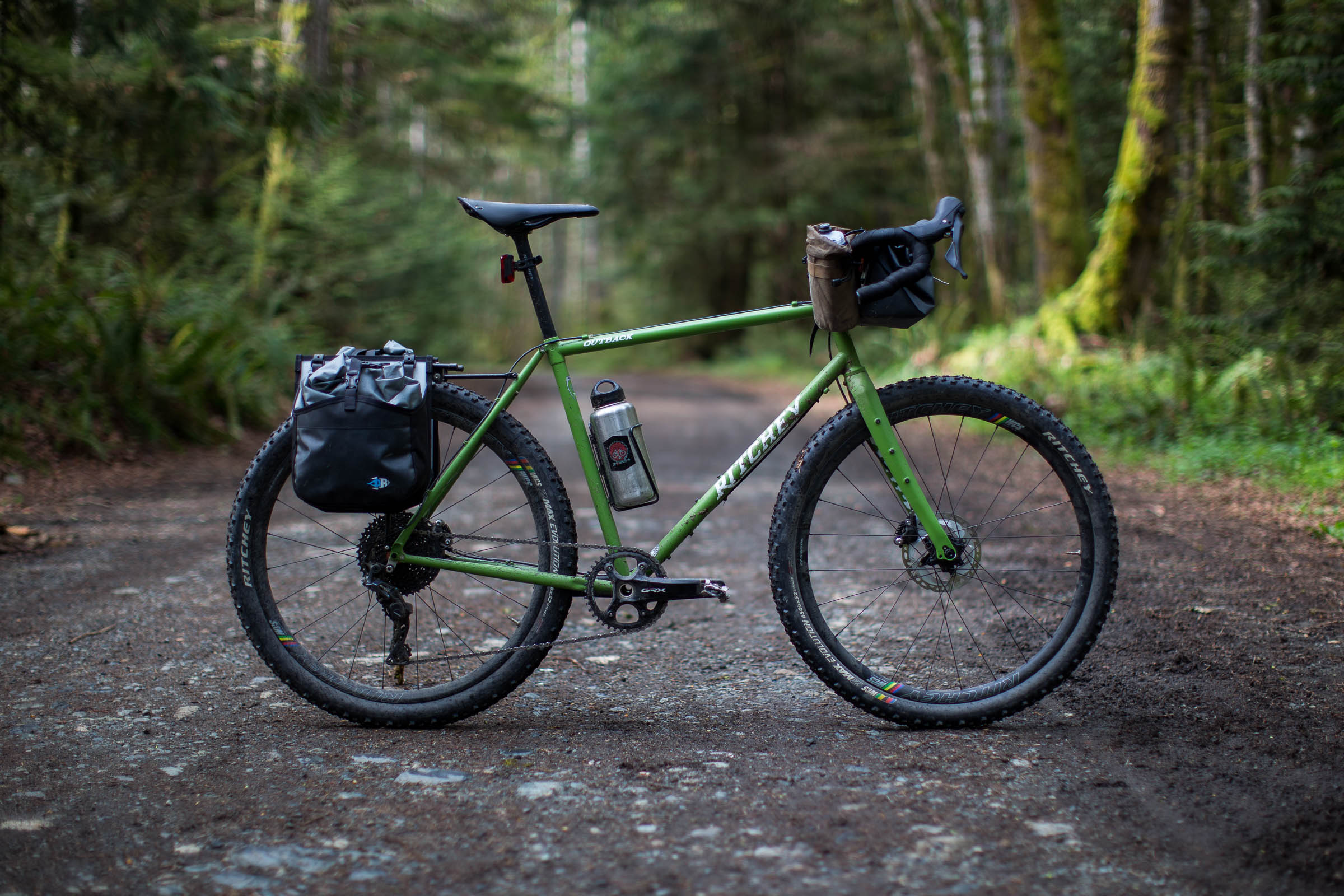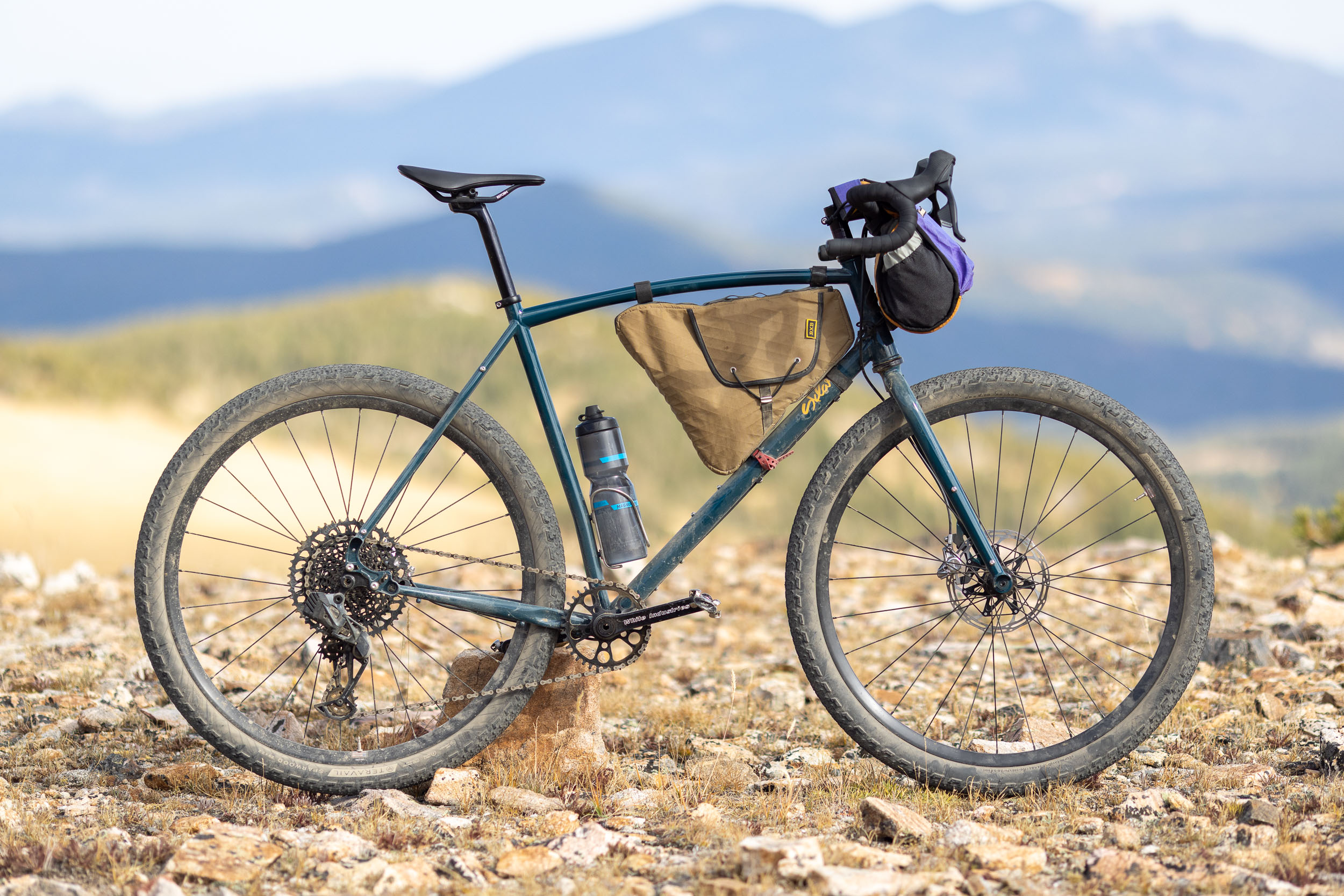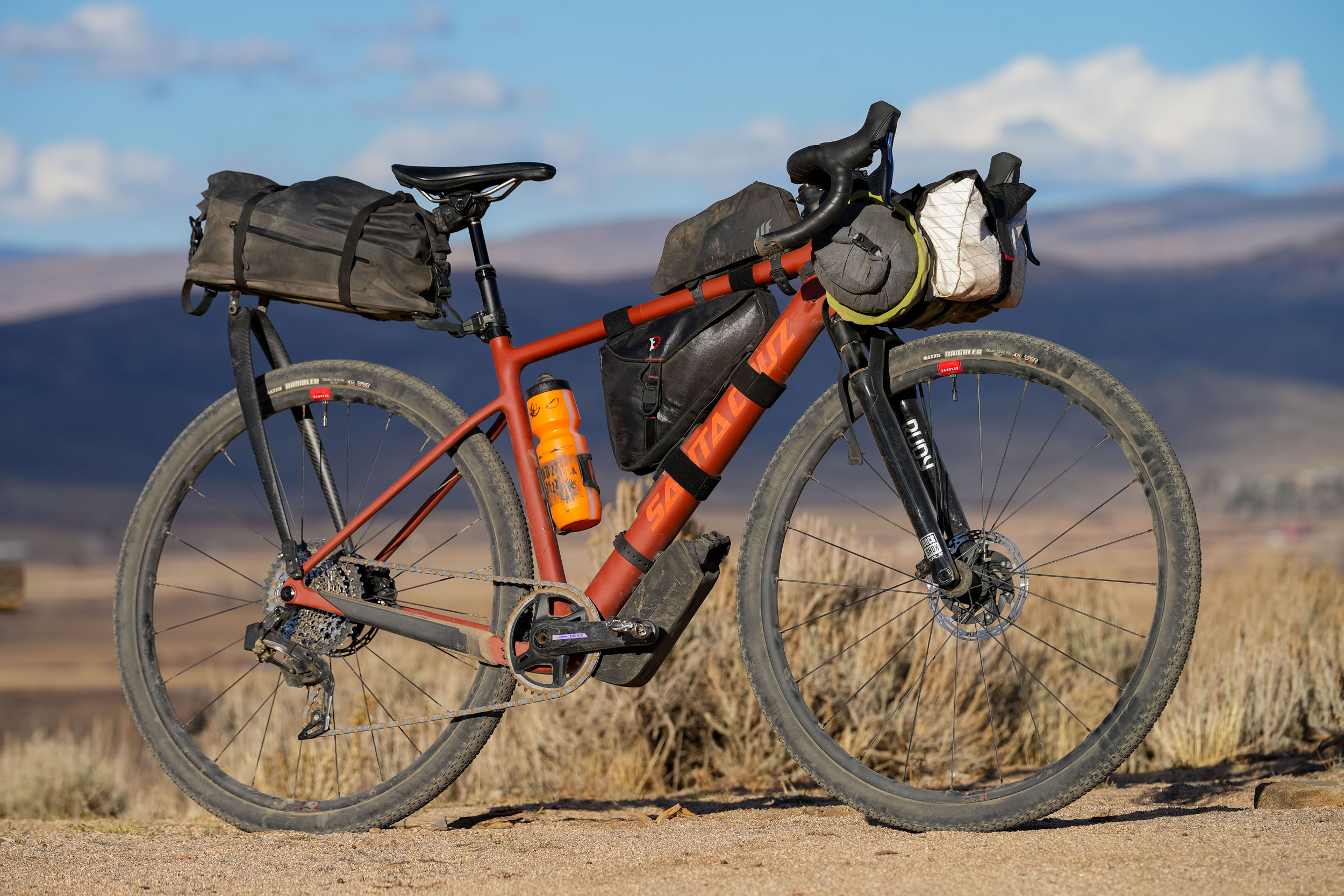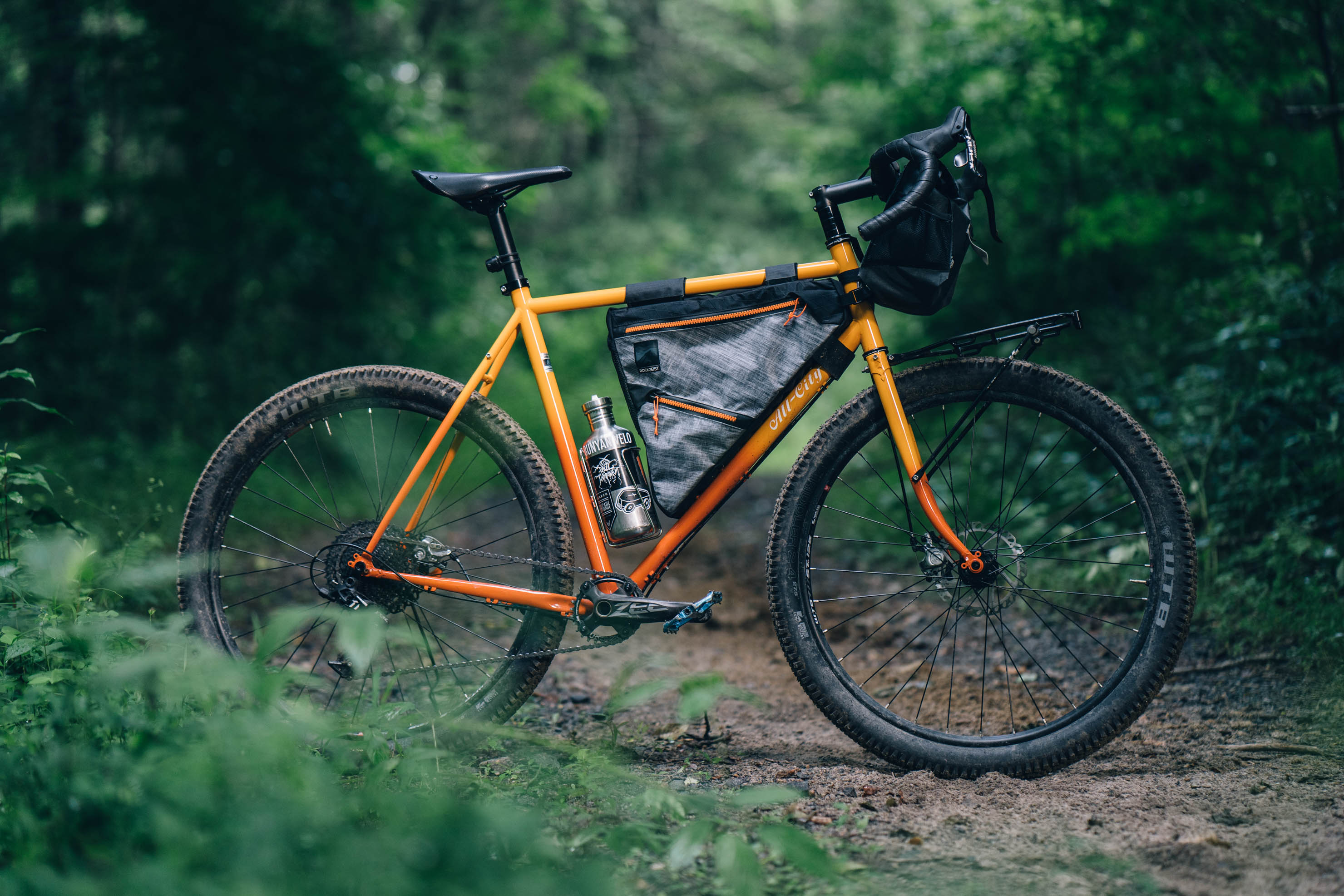What is a Gravel Bike? A Winding, Oral History
Having ridden quite a few fat-tire gravel bikes in his day, Nic has long pondered what defines the bikes he tends toward. With more than a few thousand miles on these ever-changing, increasingly scrutinized, over-hyped, under-appreciated machines, Nic delved into his mind and enlisted a few others to try and answer the question: What is a gravel bike?
PUBLISHED Feb 27, 2025
Special thanks to Ted King, Igor Shteynbuk, Sarah Swallow, and Stephen Fitzgerald for their comments.
It was the tail end of Florida’s riding season, at least the comfortable and mostly enjoyable part. Intent on savoring the last of the cool sun, I took on one of my favorite big day rides—a 147-mile jaunt connecting Orlando and Tampa. Country roads, swamps, and bike trails littered with evergreen pine scrubs, I soaked in the mid-spring light. After traversing Green Swamp, I stopped at a fruit stand on the side of the road and struck up a conversation with the vendor. I’ve always passed for white, and I liked the shocked look that lit up the face of a more obvious Spanish speaker when I relayed my order in largely accent-less Spanish.
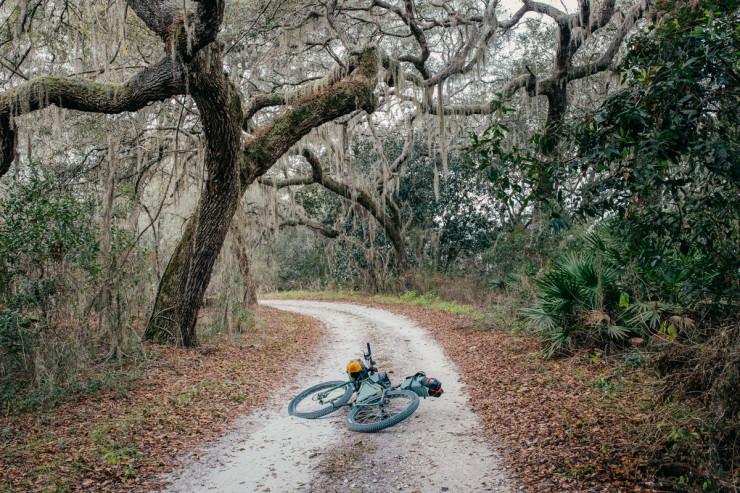
“Una agua fresca por favor. Y un jugito de guayaba también.”
Can I get a juice, please? And a small guava one as well.”
She was from Honduras, and her family had manned the fruit stand for a few years. They liked Florida because it reminded them of home. Of course, I was cashless.
Not to worry.
“Llamo a mi hijo. Lo puedes Zelle. Yo no sé hacer todo eso,” she laughed.
I need to call my son, I have no idea how to Zelle people. He can help you.
When her son arrived, we continued our conversation in Spanglish.
“Mucho calor no? To be out all day like that. De donde vienes?”
Pretty hot out… where are you coming from?
As we figured out the details of my $10 Zelle transfer, he said something that stuck with me.
“Estas haciendo gravel?” He said.
Are you riding gravel?
My ears perked up amid the otherwise innocuous conversation. I followed up to clarify.
“Si, tienes un gravel bike? No a visto una bicicleta de gravel asi, pero tenemos gravel donde vivimos nosotros.”
Is that a gravel bike? I haven’t really seen one like that, but we see people riding gravel all the time near us.
I was on my trusty Crust Bombora, a well-known though still niche bike for the wider public. Yet here, outside the small town of Brooksville, Florida, someone from a completely different walk of life knew of “gravel.”
It’s an interaction that has stuck with me as I continue contextualizing bikes in my day-to-day life. Bikes are ever-present across the world but still foreign to a lot of people. Many of us grow up with bikes as a sort of tertiary object, and most people’s experience with cycling culture tends to stem from the kind of professional cycling seen in the Tour de France. Alas, something about the “advent” of distinctly American off-road endurance riding, or “gravel” for short, seems to have captured the zeitgeist. I mean, heck, a Crust Bombora was featured in a GQ piece. While cycling as a whole is perhaps too varied and amorphous to break into the folds of popular culture, gravel, it seems, has. Within that, the ever-evolving idea of what a gravel bike is has changed, contorted, and shifted as the very nature of the space matures. This prompted me to publicly ask the simple question that has pickled my frontal lobe for years now: What is a gravel bike?
Off-Road Ontology

As many commenters will be sure to point out, riding bikes off-road that aren’t mountain bike isn’t a new concept. Famously, Tom Ritchey, taking inspiration from a mentor of his, Jobst Brandt, participated in the infamous “Jobst rides” in the mid-1970s. Riders like Tom followed the German through the mountains of central California on bikes suited for road rides. They probably didn’t call it gravel, and the existence of a group ride in the California hills implies they weren’t necessarily the first to be doing it. If you look at some of the footage from early iterations of the Tour de France, you could argue that what’s on display is, in fact, gravel. But, while it may be unclear when first instance of gravel riding truly occurred, it’s not unfair to say that the unique circumstances of the 21st century have created a category all its own.
Though I’m sure many are sick of the discussion by now, it’s important to distinguish what “gravel” is. Where American mountain biking was famously born from ventures of clunkers hitting ungodly speeds downhill in the California mountains, the origins of modern gravel can’t be so precisely defined. While classifying the complex culture of mountain bikes isn’t a can of worms I’d like to open, it’s clearly in a category all its own. Still an off-shoot of cycling-oriented activities for sure, it appears more focused on the act of traversing technical terrain via increasingly complex machines. Gravel, though increasingly complex, doesn’t seem to focus on the quite the same thing.
Defined in large part by the still-burgeoning racing scene, gravel—much like its suspension-corrected cousin—is distinctly American. Before its mainstream popularization in the mid 2010s, many in cycling circles lamented the failure of road cycling here in the US. Money had been poured into domestic racing programs, and road races cropped up all over the States. Yet, it never really took. My theory is that it’s due to the same reason gravel has exploded stateside: material conditions.
If you look where road cycling is biggest, Europe, you’ll see a unique congregation of factors. A developed and Westernized-enough society to allow for a plethora of smooth, paved roads, but a culture of existence and organization that didn’t, or at least hasn’t yet, succumbed to total auto-centrism. The confluence of paved roads and a culture that doesn’t center around inherently dangerous, increasingly large cars allowed road cycling in Europe to remain a key part of the accepted road culture.
As we all know, some people who ride a bike every day in European nations don’t even call themselves cyclists. America, however, was allowed to be ruined by the car. Occupying a much larger geographic space than its cultural counterparts, the post-war auto industry boom and unfettered lobbying by car companies to put roads and car infrastructure anywhere and everywhere created an environment where public transportation suffered. Eventually, any other competing mode of transportation was stupid, less sensible, and dangerous.
Despite a desire to pave paradise and put up a parking lot, much of America’s vast open space remained. I’d argue it’s because a lot of the country, specifically the Midwest, is like the ranger district here in Pisgah—impractical to develop. Grades are too steep, conditions too remote, and whatever paved roads could exist here are subject to extreme erosion and weather. Basic grading is the only real option. And sure, there are plenty of mountain bike trails, but trails require a lot more dedication than your basic gravel road. Namely, planning and, most importantly, money to develop and maintain. While they exist, gravel roads are much more common. And thus, through little to no bike-specific intention, the stage has long since been set.
Racing Record
With an abundance of wide-open spaces, those with enough time, access, and a cross bike took to the unpaved roads of Colorado, Kansas, Iowa, and elsewhere, eventually realizing these bikes just about got them over the hill. Alas, without a marketable motivation, why on earth would anyone make these odd, plus-sized cross bikes?
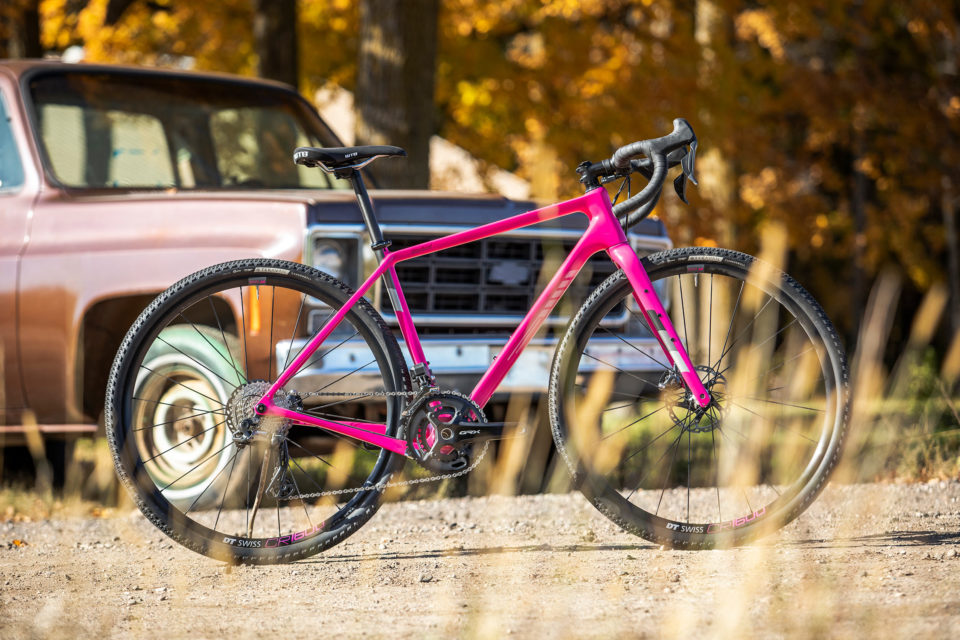
As Sean Mailen states in a post detailing the creation of the Salsa Warbird, a model some would classify as the first gravel bike, “In those days, we were mainly riding cyclocross bikes, or whatever road bike you had that could fit slightly bigger tires…you’d feel how numb your hands were from the constant rattle that worked its way into the back of your eyeballs. I thought we could make a better bike for these experiences.”
Sean spoke about his time racing the Almanzo 100 (his first “gravel century”) back in 2008 and how it shaped Salsa’s vision for what the Warbird would become. In the same feature, written by Mike Reimer, Sean mentions, perhaps a little pointedly, that people at the early events were “truly competing.” He goes on to say, “Not for a cash purse or national fame, but for the rewards that come from thrashing one’s self completely in a self-motivated attempt to be fastest on the day.” Of course, that’s primarily what most gravel events center around nowadays. With Lifetime purchasing some of the most prominent races across the country, the Grand Prix has become the premiere gravel event for pros looking for an alternative to the UCI WorldTour.
But it wasn’t always like that. I spoke to Ted King, the person often heralded or derided—depending on your perspective—for changing the American gravel scene forever. After retiring from the WorldTour, King won the UNBOUND 200 race, then “Dirty Kanza” in 2016, propelling the event to even greater acclaim. In a wandering discussion about his racing career and move toward gravel, a discipline he’s been racing for as long as he was on the road, he said, “Gosh. What makes a gravel bike in 2025… Well, for the first time in my life, you have to choose between an adventure gravel bike and a racing one. That’s for sure.”

We spoke about prior wins, where he is now, and what changes were most meaningful from his days as a bachelor heading to unpaved sections of training routes on tubed road bikes while living in Girona, Spain. He said, “My first real iterations of gravel were, for me, the grasshopper events out in Sonoma County. I mean, the roads there are tantamount to gravel. And the event organizers seek out ones that are pretty rough and tumble.” But now, having raced gravel for so long, Ted said “For better or worse, as these things have gotten faster and faster, the marginal gains have come to define the space. The ‘quiver killer’ gravel bike was once the way to go because it seemed the closest to the mean. The best not of one thing but of most things you might see. But now, things are so hyper-specific that you have to dial that in for every race. It’s the details that have made gravel into what it is today.”
Regarding the explosive rise in popularity of both events and “gravel-specific components,” Ted said, “People have gravitated toward gravel because it’s fun, it’s new, it’s creative, and it’s theoretically safer. The demand for gravel is there because it’s fun, and the industry follows because of the demand.”

Of course, the big brands’ adoption of quiver-killer gravel bikes and their related componentry doesn’t happen without experimentation and market testing. While larger brands like Specialized, Trek, and Canyon are still creating race-specific, relatively conservative models that have more in common with their road-oriented counterparts, it was smaller brands like Crust Bikes that led the way in introducing and popularizing what we’d come to recognize as gravel bikes. Pushing the ends of the proverbial envelope through steel, fat-tire, road-inspired bikes to more than just those willing to pin on a race number, they might not have been the first to do it, but Crust changed the game for gravel cycling with both what and how they delivered it. Road geo, fat tires. It’s simple. Owners Matt Whitehead and Angelica Casaverde packaged that uncomplicated idea in a skate/BMX-inspired manner that captivated previously untouched corners of the athletic populous. Soon, the American off-road scene truly became a more diverse, interesting, and complex space, with bikes suited to match.
Intending to get a better idea of the more casual consumer audience, I also spoke to Igor Shteynbuk, co-owner and operator of Velo Orange, about where the space is in 2025. He said, “It’s the details. None of this is new. The details make modern bikes different from what existed 20-some years ago. Thru axles, disc brakes, tubeless, and a few other consequential albeit minor things. It’s the details!” Igor said this from the perspective of a business owner looking to offer value to prospective customers. “As much as it’s interesting to talk about passion as an impetus, I try to listen to our customers as much as possible. What people have talked about wanting is larger clearances, mounting points, and, ultimately, more capability. So, with future offerings, that’s what we’re moving toward.”
As much as I could appreciate and value the perspective, I wondered if there wasn’t a Ship of Theseus moment along the way with gravel bikes. Sure, as Igor was keen to point out, a lot of it is marketing. There were micro-suspension-oriented solutions in the ’90s and early aughts, just as there have always been hybrid bikes—un-marketed models with the hallmarks of gravel bikes and modern-ish ATBs for ages now. But, even if the technology has always been there, even if the geometry and intended purpose of these non-conforming models were the same, doesn’t the confluence of these existent pieces make something new? To get a better idea of that concept, I spoke to Stephen Fitzgerald of Rodeo Labs, a company undoubtedly born and bred in the gravel era, to clarify the distinction between old and new.

“Listen, if gravel bikes are just ‘90s mountain bikes, so what? Who loses there? They’re not, for the record. There are so many distinctions that make the gravel bikes of today so much better, but who cares? If the difference between people getting out and riding the stuff they’ve been on for the past few years is psychological, does it matter what gets us there?” He was passionate and incisive. Developing a slew of unique gravel-oriented offerings over the past few years, it’s clear gravel meant a lot to Stephen.
“What we’ve always asked here at Rodeo is: how much fun can you have on one bike? After quite a few years, I think we’ve figured that out.” Coming from a mountain bike background, what gravel bikes offered Stephen was versatility. “I enjoy the challenge of being underbiked. It doesn’t bother me. But I want people to be comfortable. I think what we’re seeing now is that people are finding more comfort and capability on something like a hardtail. The industry certainly feels like it’s trending in that direction.”

The elephant in the room is Rodeo Labs’ long-teased Show Pony, a mountain bike-oriented project of their own. “I mean, had I just let it rip once the first prototypes were ready, we could’ve been selling mountain bikes for years now. But I didn’t want that. I’m not going to put something out unless I feel it really adds to the market instead of just being our version of what already exists. With our current models, I feel like we have always added something.” Of course, Stephen had long since gestated on the divide between modern gravel bikes and mountain bikes. “Sometimes people ask about a new Traildonkey or Flannimal, and I’m like, ‘What do you think that’s going to look like? What, it’s going to fit a 3” tire?’ There comes a point where a bike that can fit a 29 x 3” tire isn’t also going to be a very good road bike. And that’s where it no longer makes sense for us. Bikes that let me have adventures out of my front door, with a lot of versatility, are the ones I ride most. As great as they are, mountain bikes feel like something you add to a quiver.”
Nearing the end of our conversation, Stephen addressed the very nature of the space that has defined a lot of what they’ve done at Rodeo, “I think the space is now mature. Gosh, I hope we’re not middle-aged! But, before, when it was something fresh and new, maybe those were the adolescent years. Now, it seems like a lot of the companies have reached a sense of parity.”
Reaching out to Sarah Swallow, a well-seasoned off-road adventurer who needs little introduction, her concept of what gravel meant and where it was going seemed indicative of the space itself. “I don’t consider myself part of the gravel scene anymore. I haven’t for a long time,” she said. When asked about what makes a gravel bike in 2025, her answer spoke to a feeling of being outside the space. “It’s obviously very different than what it was, say, in 2011. But it’s probably a drop-bar bike that fits 47mm tires. It probably should fit more, though. I don’t ride much of that anymore.” She continued, “With no disrespect, a lot of it just feels repetitive. Coming from an endurance road background, I used to really like what gravel gave me. But now, I’m looking for more technical stuff. To go deeper and more into nature. I just call it adventure riding. Gravel, to me, as great and as inclusive as the big events are, isn’t something I’m super interested in anymore.”
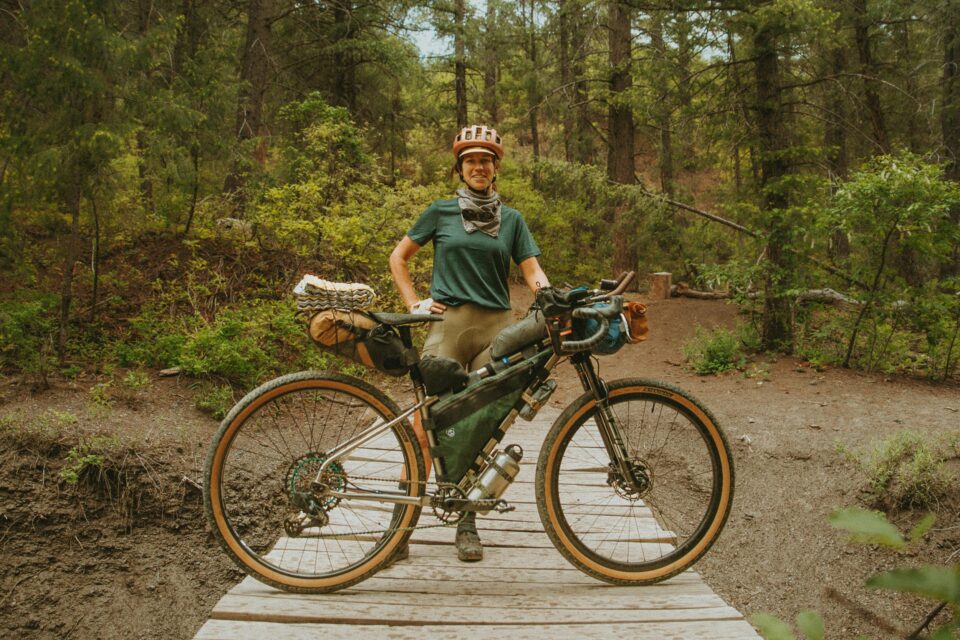
Speaking to her role as an organizer of the Ruta Del Jefe event, she said, “I think when an event is result-oriented, it forgoes connection. Ruta Del Jefe has a lot of different route options that offer varying experiences to the people who show up, but the bikes are secondary. The event is about advocacy and education. That’s what’s important to me now. And, given how much the routes have changed, no one should show up on a gravel bike!” she laughed. “My interest and influence in the gravel space has evolved as I’ve gotten older, and what I value now is community, grassroots movements, and connections. I was never sponsored for my racing achievements on the bike, really just how I integrated it into my lifestyle. Now, I think I’ve moved beyond what the mainstream definition of gravel is.”
Taking all these conversations in, I couldn’t help but agree. The space has changed so much across its more than 10-year lifespan that, while I’m still uncertain of its true definition, I come back to a core idea. Having ridden a fair few gravel bikes, something almost everyone I spoke to said resonantes with me: gravel bikes are about versatility. As someone who likes to go fast and smell the roses, despises driving to a ride, and values the aesthetic of traditional, aggressive road bikes, a truly fat-tire (something that maxes out at 2.25”) bike always felt like the perfect jack of all trades. Sure, an XC bike fares better on the rough stuff. Yeah, a skinny road bike makes more sense in the urban miles. And yes, a load-specific rig for long-distance bikepacking carries gear better. But none of them do all of it. On top of that, I’m not someone who enjoys having a shed full of bikes. If I’m not using a bike, I’m selling it or giving it to someone I want to get stoked on bikes. So, having a “quiver killer” makes sense. As much as I have enjoyed my forays into the specifics, I always come back to big-tire, aggressive gravel bikes.
Eccentric Etymology
With all that understood, it’s important to note that discussing these terms isn’t an attempt to reach a definitive answer. As I wrote at the top of this piece, the question of what makes a gravel bike and the very nature of the gravel space is something I’ve thought about for years. Language and the use of terms that fall within it are precisely that: linguistic tools. When I studied philosophy, part of my focus was on the philosophy of language. Amid many discussions about personal and communal communication, one idea we often tossed around was how to define “language.” It was a thought exercise that a group embarked on discussing, sometimes ad nauseam, several times a week for a few years as a graduate studies group. A definition I’ve repeated through my synthesis of the idea is: Language is a communal resource that is personally defined.
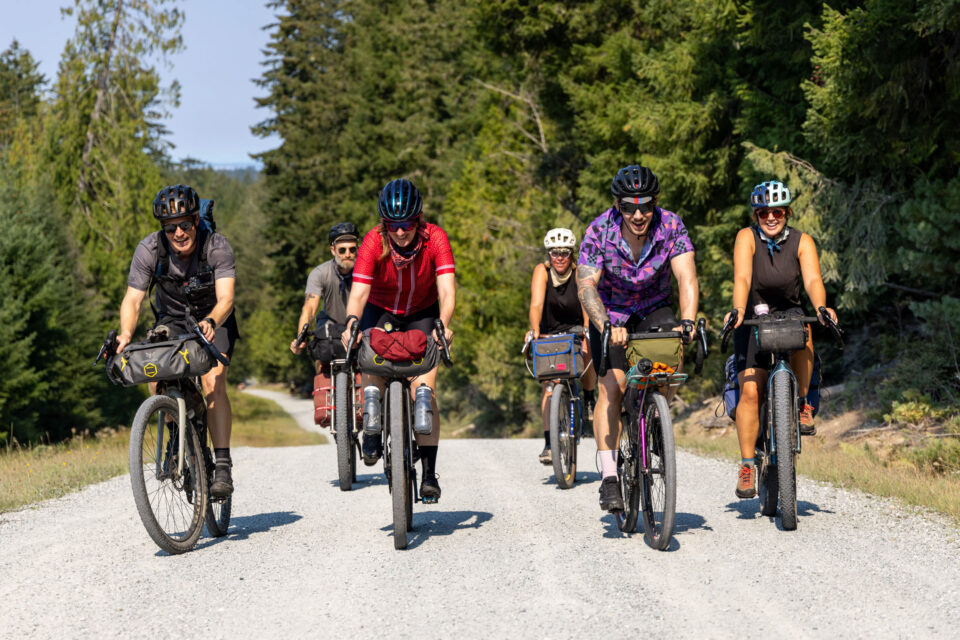
For language to function, we have to be able to agree on what a signifier is. What the color red denotes, what constitutes a sharp angle, or the idea of something being “hot.” But how we employ those sometimes deeply specific concepts is personal and unique. You might have a negative connotation of the concept of red, whereas I might have a passionate, albeit positive one. Sharp angles may be pointed to me, but to someone else may just signal a distinct shift in construction. One person’s hot is another person’s mild. You get the idea. The general understanding of what these terms mean may be universally agreed upon, but how we use them is completely individual.
While I find that concepts can be enriched through conversations and dialogue, there comes a point where the synthesis of defining a concept becomes exclusive—intentionally or otherwise. Say, for example, when attempting to define what the word “bikepacking” really means. We might have a use for it here on the site, and it might serve to distinguish some competitive end, but people are going to use it as it makes sense within the bounds of an appropriate, given context. With regard to gravel bikes, Logan stated, “From the perspective of the site, I think ‘gravel’ is a good way of distinguishing a route that can be comfortably ridden on a bike with ~42-47mm tires and not toss people into an abyss of technical terrain—particularly people who don’t like the rough stuff.” That’s the purpose the term serves for him, a founding editor and someone who spends a great deal of time thinking about routes and their defining characteristics. For others, it might differ.
Given the task of defining what “gravel” is has proved close to impossible, attempting to do the same for the “gravel bike” seems even more difficult. Where one attempts to draw the line becomes a frustrating game of shifting goalposts. It seems that for every categorical gravel-oriented imperative, there is an exception. “Gravel bikes are ones with large tires, but not boost spacing!” one might think, only to realize classics like the Surly Grappler, Cotic Cascade, and Ritchey Ascent are all boost spaced, among others. The same goes for bottom bracket widths and standards, maximum or minimum tire clearances, geometry specifics, and drop or flat bar orientations. They all fall by the wayside as these bikes—much like their contingent term—are defined by an individual’s use.
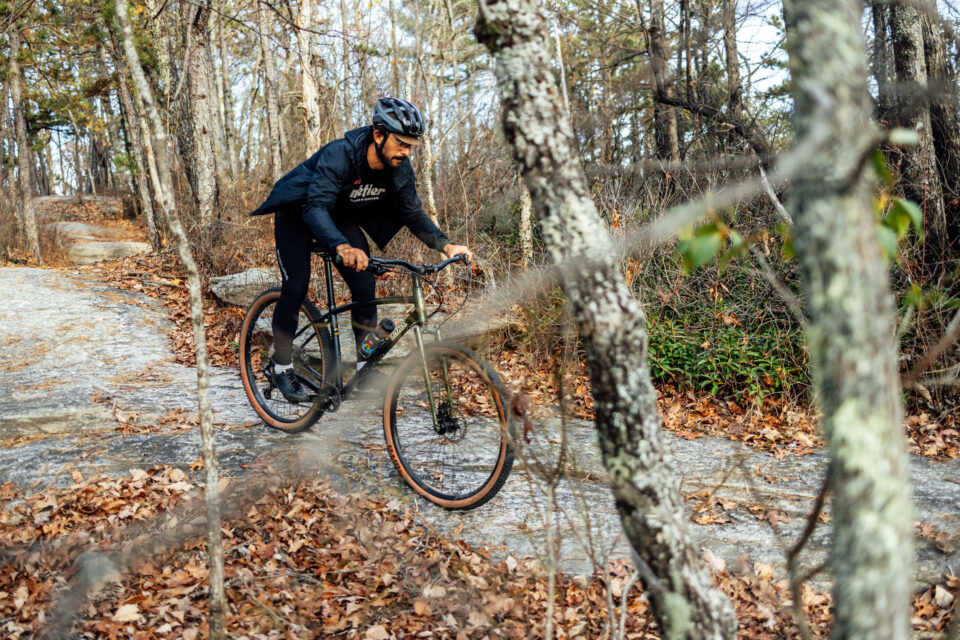
With gravel now being a somewhat mature, well-defined space, it seems the time of explosive growth is over. The age of hyper-specific models and marginal changes are here, whether they’re performance-oriented or not. But as those within the space continue to grow and evolve, so too will the bikes that ambulate them. Will we see the lines continue to blur as seasoned gravel riders depart for more adventurous riding? Have we reached a critical mass regarding gravel events, or will they shift more toward education and advocacy as our public lands become subject to greater development and exploitation? One thing is certain: the future, much like the terms we attempt to pin down, remains undefined.
What does gravel mean to you? Are gravel bikes simply recycled, over-marketed tech from the past? Or is it a distinctly new idea that has changed the cycling scene for the better? Let us know in conversation below…
Further Reading
Make sure to dig into these related articles for more info...
Please keep the conversation civil, constructive, and inclusive, or your comment will be removed.


